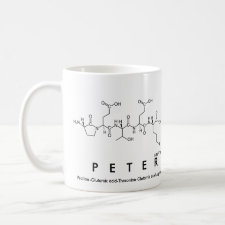
Authors: Spégel P, Schweitz L, Nilsson S
Article Title: Molecularly imprinted microparticles for capillary electrochromatography: Studies on microparticle synthesis and electrolyte composition.
Publication date: 2001
Journal: Electrophoresis
Volume: 22
Issue: (17)
Page numbers: 3833-3841.
DOI: 10.1002/1522-2683(200109)22:17<3833::AID-ELPS3833>3.0.CO;2-9
Abstract: The use of molecularly imprinted polymer (MIP) microparticles in a partial filling application of capillary electrochromatography (CEC) has previously been shown successful for the enantiomer separation of propranolol. In this investigation, the influence of some important parameters in the preparation protocol, i.e., template to monomer ratio, type of cross-linker and functional monomers, and the effect of separation condition, i.e., organic modifier content, pH and the temperature of the column, on the electrochromatographic behavior of the MIP microparticles were studied. It was found that ethyleneglycol dimethacrylate (EDMA), having two reactive double bonds, was superior in terms CEC performance to trimethyl propane trimethacrylate (TRIM) and pentaerythritol tetraacrylate (PETEA) having three and four double bonds, respectively. The use of weak functional monomers, i.e., monomers lacking a strong interaction with the template, was shown to increase the separation efficiency. It was found that the template to functional monomer ratio had a pronounced influence on the MIP microparticle partial filling CEC performance as well as the size of the obtained microparticles. The use of a partial filling technique realizes the use of a new MIP phase in every new separation as well as the ability of altering the selectivity of the separation column and length of the MIP without the need for column switching



Join the Society for Molecular Imprinting

New items RSS feed
Sign-up for e-mail updates:
Choose between receiving an occasional newsletter or more frequent e-mail alerts.
Click here to go to the sign-up page.
Is your name elemental or peptidic? Enter your name and find out by clicking either of the buttons below!
Other products you may like:
 MIPdatabase
MIPdatabase









